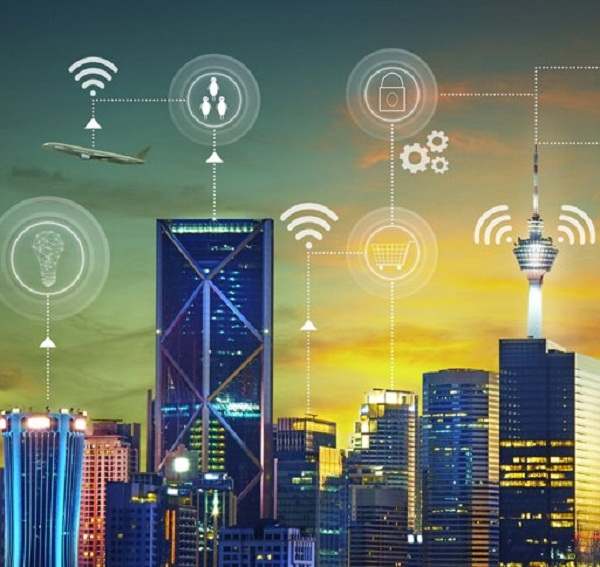Organizations are increasingly focusing on implementing smart building technology for a connected and futuristic workplace. However, the mounting pressure on businesses to reduce operating costs while facilitating increased workplace productivity and employee comfort presents a paradoxical challenge. Ensuring sustainable growth, energy savings and reduction in carbon footprint are other significant factors affecting ‘digitization’ of workplaces and smart buildings.
This is compounded by the common perception that smart facilities must be constructed ground-up, as turning existing buildings into smart facilities is fraught with challenges and often unsuccessful. A number of reasons contribute to this belief. Existing buildings come with legacy systems, equipment and infrastructure components added over time, all of which function in siloes. Smart building solutions currently available in the marketplace often do not integrate applications with ease as they lack a unifying infrastructure base that can bind the systems together for information sharing and collective functioning. Completely replacing the entire infrastructure is therefore perceived to be the only solution to achieve energy savings, which is both capital and effort intensive.
Contrary to this belief, adopting a structured approach, combined with the right technology platform, can help facility managers transform existing buildings into smart, connected facilities while maintaining their operating margins. A technology platform that combines mobility, cloud and internet of things (IoT) can enable successful integration of existing infrastructure, including utilities, controllers/BMS, CCTV, ERP system, ticketing system and more.
Such a dynamic platform allows users to define rich rules based on real time data and historical information to enhance decision making, leading to proactive response management, better infrastructure utilization, superior user experience and incremental cost savings. By connecting geographically dispersed buildings, the platform enables facility operators to simultaneously manage multiple building systems, ensure secure access control and carry out preemptive maintenance.

The following five-step process can help facilities managers transform their legacy buildings:
- Undertake a discovery process: To ensure well-planned digitization and integration efforts, begin by acquiring a holistic picture of the aspects of infrastructure management that need to be digitized. These include using sensors to gather data from HVAC, lighting and cooling systems, installing CCTVs to gather video feeds, and implementing ERP and ticketing systems to track asset utilization and maintenance issues.
- Clearly define objectives: As a next step, clearly define the objectives and ensure consensus between COO, the facilities manager and the IT lead. The goals must highlight three important aspects: Capex cost control as a result of integrating existing building infrastructure with smart technology, inclusion of central monitoring capabilities, and a clear roadmap for implementation, infrastructure management and future enhancements for sustainable growth.
- Align IT and OT: The convergence between information technology and operational technology (IT/OT) systems is the cornerstone of smart buildings – for instance, cohesive integration of BMS, lighting, access, security and so on. An ideal smart building solution uses a centralized, automated, intelligent platform to integrate systems responsible for facility management, enabling data-driven decision making for facility managers.
- Partner with the right vendor: Real-time data generation, analytics, end-to-end project management and operational excellence are key to successful adoption of intelligent building technology. It’s therefore important to ask the right questions when selecting a vendor. Does the vendor have the right mix of analytics and technology integration capabilities? Can the vendor efficiently integrate several existing systems and provide one comprehensive platform interface to manage all aspects of the smart building? More importantly, can the vendor integrate existing suppliers and vendors with numerous systems licenses and access controls? And finally, can the vendor scale the new technology without disrupting routine facility management operations? It is important to select a vendor who can not only integrate existing systems but also ensure continued optimization of the infrastructure and scalability through strong program management skills.
- Stake holder involvement: Successfully transforming existing buildings into smart ones requires stake holder involvement and buy-in. Building tenants, owners, users and the vendors alike must be in agreement on expected outcomes and best practices for efficient infrastructure management. An efficient smart building solution drives superior end-user experience by enabling integration across user interfaces, including mobile applications. Features could also include supporting a hot-desk and a control desk for gathering complaints, inputs and feedback from users in order to provide better escalation management.
Retrofitting existing buildings with smart infrastructure can significantly enhance efficiencies and sustainability while producing a quick ROI. As organizations and infrastructure management companies alike increasingly make smart buildings a priority, an IoT-based platform can act as a powerful tool in the hands of facility managers, enabling them to optimize the use and enjoyment of their facilities in a sustainable manner.
Source: mindtree










